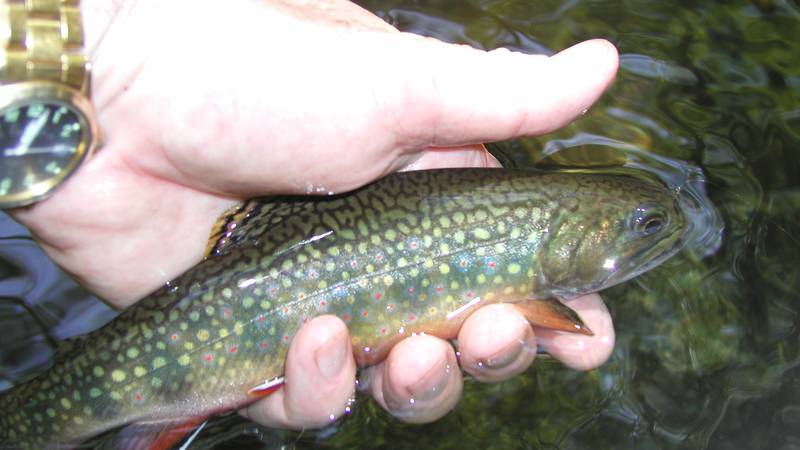If the climate continues to warm, weird weather patterns and invasive grasses could wipe out an icon of the American Southwest.
This story is part of a series on ways that climate change and air pollution are having unexpected effects in our national parks.
Not a soul is in sight as I trudge up the Cactus Wren Trail in the western district of Saguaro National Park, exhausted from an afternoon of hiking in the Arizona summer heat. The only sounds come from the wrens chirping and lizards skittering off the trail as I pass.
Up ahead, atop Signal Hill, sun-shaped petroglyphs etched into the rocks a thousand years ago remind me just how ancient this landscape is. I think back to the many generations who have traversed these trails before me, marveling up at the same groves of saguaro cacti silhouetted by the setting sun.
Perhaps no one has a better appreciation for the saguaro than the Tohono O’odham, or Desert People, who have lived in this region for more than five thousand years.
“It’s revered, and people identify with it,” says Bernard Siquieros, curator of education for the Tohono O’odham Nation Cultural Center and Museum. “The plant appears specifically in one of our creation stories. … The first saguaro emerged where a young boy sunk into the ground.”
Not only is the saguaro revered by the Tohono O’odham, it’s also incredibly useful to them. The long ribs that give the cactus its structure are used to make traditional homes and fences. The flesh can soothe scratches or burns, not unlike aloe vera. And the fruits are harvested every summer to make syrup, jam and a fermented beverage consumed only during the annual rain ceremony.
The saguaro, in short, is part of the identity of the Tohono O’odham. Siquieros tells me he and his wife recently drove back to Arizona from a trip to Chicago. “The whole way, we were looking for the first saguaro,” he says. “That would indicate that we were home.”
Video by Alex Rudee/NPCA.
The Tohono O’odham aren’t the only residents of the desert who associate the saguaros with home. The cactus also provides food and shelter to a host of other creatures, from coyotes to the ubiquitous cactus wrens. Indeed, it would be hard for anyone, human or animal, to imagine this land without the millions of saguaros that tower above it.
But because of climate change, a saguaro-less Sonoran Desert could eventually become reality.
Climate change in the desert? Really? Meg Weesner, who retired as Saguaro National Park’s resource management chief in 2011, sums up a popular opinion on the matter like this: “Everyone knows the desert is hot. It could be hotter; they’re used to it.”
However, she says, “Some of the forecasts for climate change in the Southwest are rather dire. Particularly as it relates to water availability.”
Scott Stonum, who succeeded Weesner as chief of science and resource management for the park, adds, “We’re expecting things to get hotter and drier. We’ve seen changes in the timing of the precipitation that is going to affect the plants and wildlife that’s unique to the park.”
Even — or especially — in the desert, water is life. Saguaros have evolved to rely on the summer monsoons and winter rains that prevail here. Their adaptations to this regional weather cycle are so specific that the species is found in the Sonoran Desert and nowhere else on Earth.
“The saguaros have got it dialed in,” says Andy L. Fisher, chief of interpretation for the park. “They know exactly when they need to put up the fruit to put out the seeds, to get the seeds carried by the animals, to get seeds deposited just in time for the first monsoon rains.”
That kind of specialization has helped the saguaros flourish for thousands of years. But now, it may hurt their chances for survival in a landscape that’s changing much faster than the cacti can evolve.
“If monsoon rain comes late, those seeds don’t have a chance.”
Increasingly variable rainfall is just one of the challenges that saguaros face in a changing climate. Another worry comes from the edge that warmer conditions are expected to give to buffelgrass, an invasive bunch grass introduced from Africa in the 1930s.
If you’ve never been to southern Arizona, you’ve probably never even heard of buffelgrass. But around the park, it’s at the top of everyone’s minds.
“It has the ability to directly outcompete all of the Sonoran Desert native vegetation,” Stonum says, as we take refuge from a sweltering afternoon in the shade outside park headquarters. “Left untreated it will spread through the park, up to five thousand feet in elevation. Saguaros, creosotes, all of the flowering perennials that we have here could be replaced by this non-native grass.”
I look around, imagining all these strange and wonderful desert plants replaced by a grassland, and shudder.
Across town, just outside the western district of the park, conservation scientists at the Arizona-Sonora Desert Museum are hard at work devising strategies to tackle the buffelgrass problem across the Tucson Basin. One of them, Kim Franklin, even wrote her dissertation on the issue for the University of Arizona.
Competition for space isn’t the only threat that buffelgrass poses to saguaros, she tells me. It also brings fire.
“It’s a highly flammable grass,” Franklin says. “Buffelgrass fires are very hot. And saguaros are not adapted to fire. That’s not a natural part of this ecosystem, and so fire will kill the saguaro.”
The math of climate change is simple: Hotter summers mean a greater likelihood of fire. Warmer winters mean less chance for buffelgrass to die back in a hard freeze. It all adds up to long odds for the saguaros. So how concerned are the staff at Saguaro National Park about the threat from buffelgrass?
Fisher puts it best: “If we start seeing buffelgrass come through and we have larger fires, really you can start calling us Buffelgrass National Park. The cacti are not going to survive that.”

Do Brook Trout Have a Future in Shenandoah?
One of Virginia’s most popular national parks is a haven for native fish, but warming waters could prove devastating for this keystone species.
See more ›And that, she believes, would be a huge loss not just for the ecosystem here, but for society.
“When you think about the American Southwest, and you think about Western movies, inevitably a saguaro cactus is one of the things you think about. … If we get to the point where it’s harder to see those, if you can’t come from someplace else and immerse yourself in that wild west iconography and culture, I think we’re really missing an opportunity.”
Franklin has a more practical spin on what buffelgrass could mean for the region. “The tourism industry is a huge part of our economy here in Arizona,” she says. “Losing saguaros, losing these beautiful landscapes, would have a big impact on our economy.”
Whether you’re partial to the romantic visions of old spaghetti westerns or dollars and cents, the message is the same. Climate change spells trouble for the forests of saguaro cacti that cover the hills here, for the park that bears their name, and for the region that displays them as an emblem to the world.
Stay On Top of News
Our email newsletter shares the latest on parks.
And then, of course, there are the indigenous people, the Tohono O’odham, who have intertwined their lives with those of the cacti for millennia.
“How does this impact them as a people? That’s another question that I think we should be asking,” Fisher says. “What happens to their culture when the saguaros are not there?”
Siquieros doesn’t want to answer that question.
“We figure that the saguaro will adjust to the many changes that occur,” he says optimistically, “just as we as a people have adjusted.”
This story is part of a series on ways that climate change and air pollution are having unexpected effects in our national parks. Read about how climate change is affecting brook trout at Shenandoah and how air pollution is causing problems for visitors and ecosystems at Yosemite.
About the author
-
 Alex Rudee Contributor
Alex Rudee ContributorAlex Rudee is a former intern with NPCA and a graduate student at Duke University’s Nicholas School of the Environment. He studies environmental economics and policy, with a focus on land conservation and climate policy.
-
General
-
- Park:
- Saguaro National Park
-
- NPCA Region:
- Southwest
-
-
Issues


